When imagining our dream home, many of us picture a lawn full of lush green grass. However, maintaining a picturesque lawn takes a lot of time and resources. Homeowners need to regularly mow, water, aerate, de-weed and sometimes fertilize their grass to maintain its desired look. Manicured lawns have become a source of pride and a standard in many areas; however, this is beginning to change.
While green spaces are important, homeowners are shifting their attention to low-maintenance alternatives and embracing a more natural appearance.
Grasslands, including those in Manitoba are one of the planet’s most endangered habitats. This has cascaded into the endangerment of species who rely on these ecosystems. Placing native plants into your yard allows it to return to its natural state to support our diverse prairie landscape by supplying wildlife with food and shelter.
This doesn’t mean allowing your yard to be taken over by weeds but instead enhancing your property with native plants that have grown and adapted to our region for centuries. This equips them with the ability to thrive with minimal care, which requires less maintenance for homeowners. This is great news since many native wildflowers, grasses, shrubs and trees display a brilliant range of colours and textures that can be used to enhance your yard’s natural beauty.
Here are some native plants to consider for your yard:
Grasses
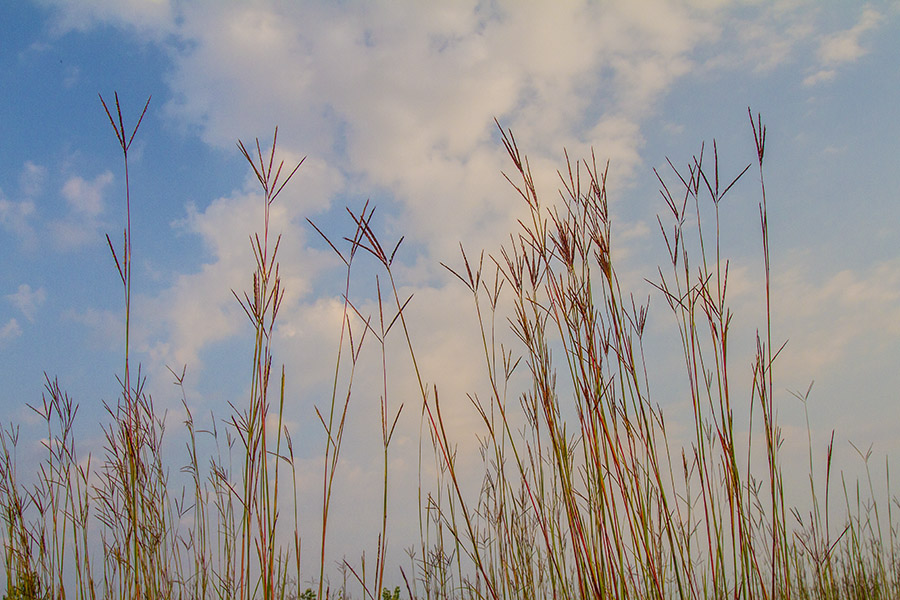
Big bluestem
Big bluestem is a tall grass with seed heads that resemble a turkey’s foot with its three long strands. This grass grows in almost any soil from dry sand to wet clay and displays a remarkable rusty colour in autumn.
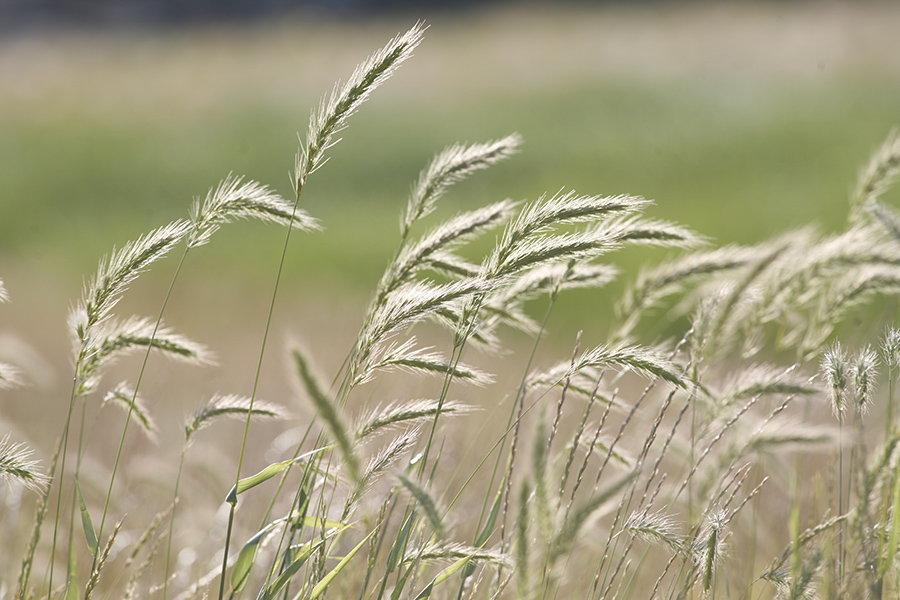
Canada wild rye
This grass has attractive curving seed heads with broad bluish green leaves that can tolerate dry to moist soils. Canada wild rye is fast growing, easy to re-seed and grows in clumps.
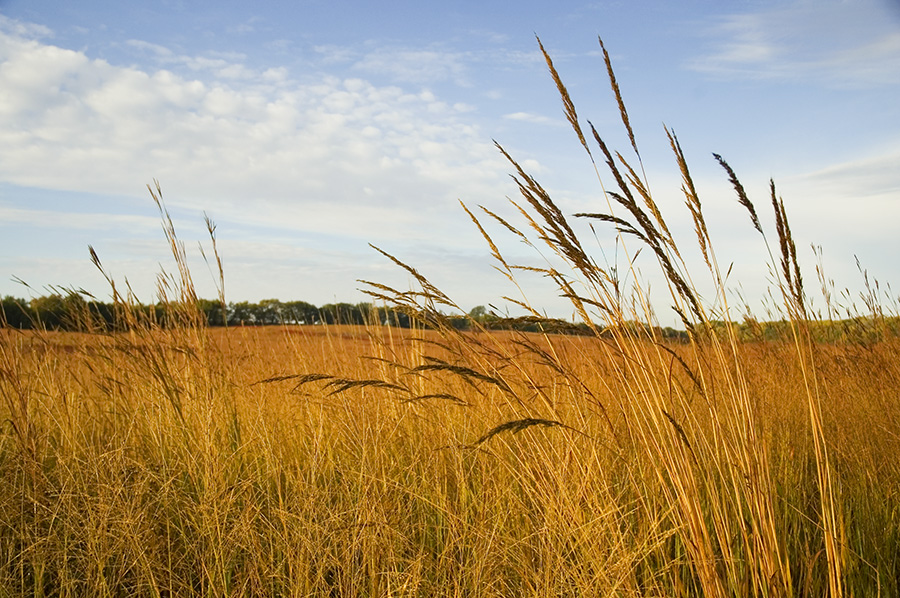
Indian grass
Indian grass makes an excellent accent piece when landscaping and it grows in a variety of soil conditions. Indian grass does well in full sun and displays silky golden seed heads and bronze leaves during the fall.
Wildflowers
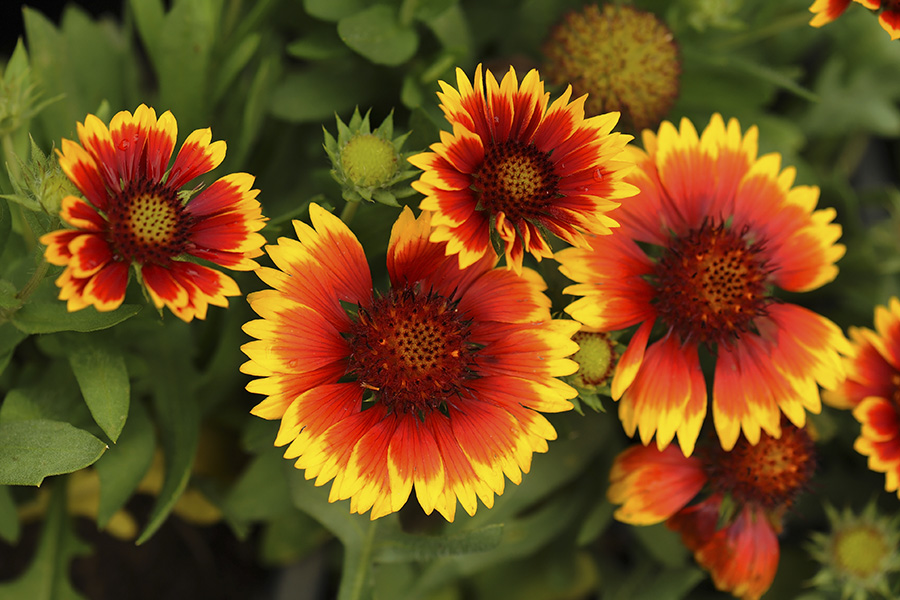
Gaillardia
Gaillardia is a beautifully bright flower to add to your garden. It’s large showy petals bloom in July with a burst of yellow and red colours. This flower is deer resistant and is a fantastic pollinator for bees, butterflies and owlet moths. Gaillardia’s seeds attract birds and it grows in medium to dry soils with full sun.
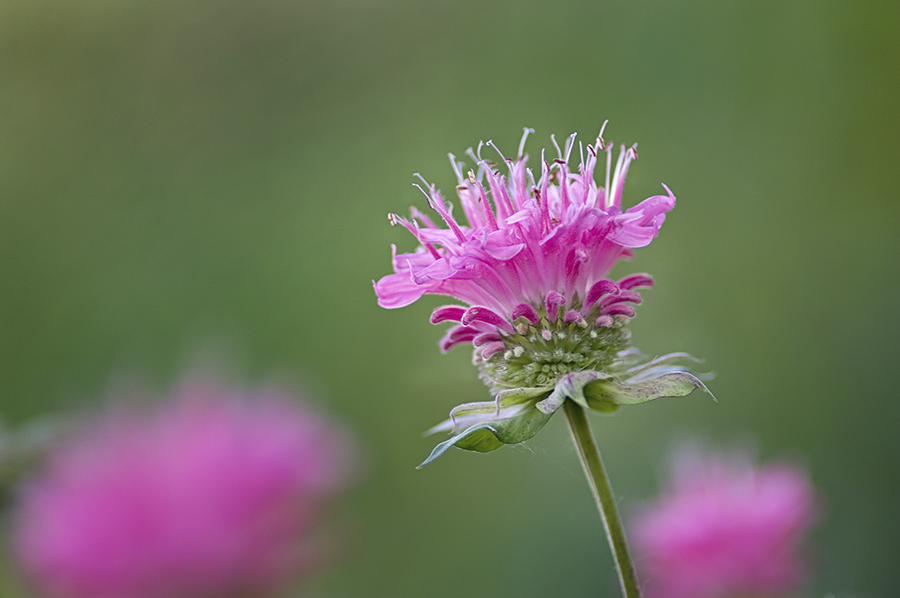
Wild bergamot
Wild bergamot almost seems to glow at dusk and adds a stunning display of pink and purple colours to any garden. Also known as bee balm, this wildflower attracts a variety of pollinators such as butterflies, bees and hummingbirds while being both deer and rabbit resistant. Wild bergamot does well in full sun and in a range of soil conditions.

Three flowered avens
Three flowered avens have multiple reddish pink flowers that create an unusual appearance, making them stand out in a garden. Also known as prairie smoke or grandfather’s whiskers, these wildflowers make a spectacular scene when used as groundcover for dry areas. They are deer resistant and are great for attracting various types of pollinators including bumble bees, sweat bees, honey bees, as well as leaf beetles.
Shrubs
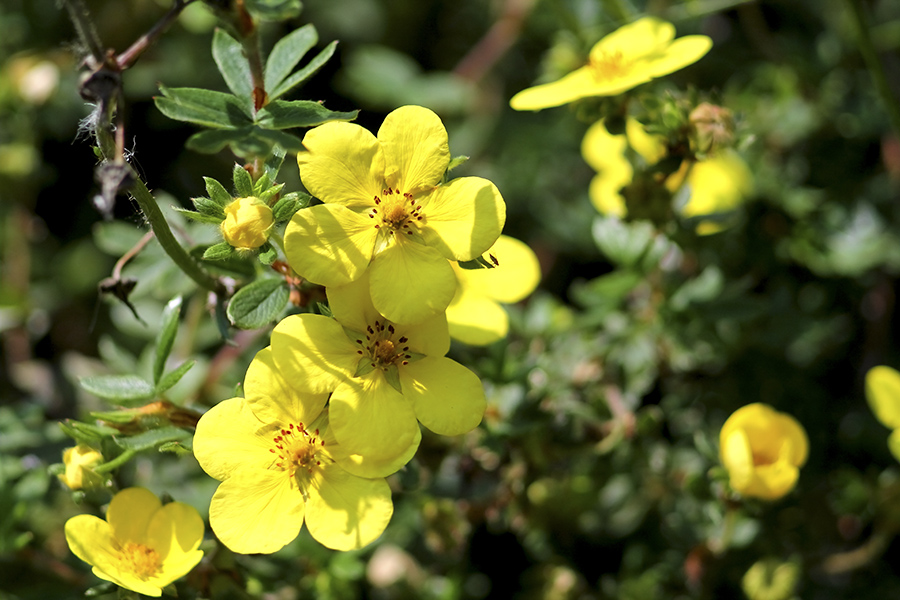
Shrubby cinquefoil
Shrubby cinquefoil blooms from June through to September and attracts pollinators such as butterflies and bees. This shrub helps control erosion, does well in dry to moist soils and is deer resistant.
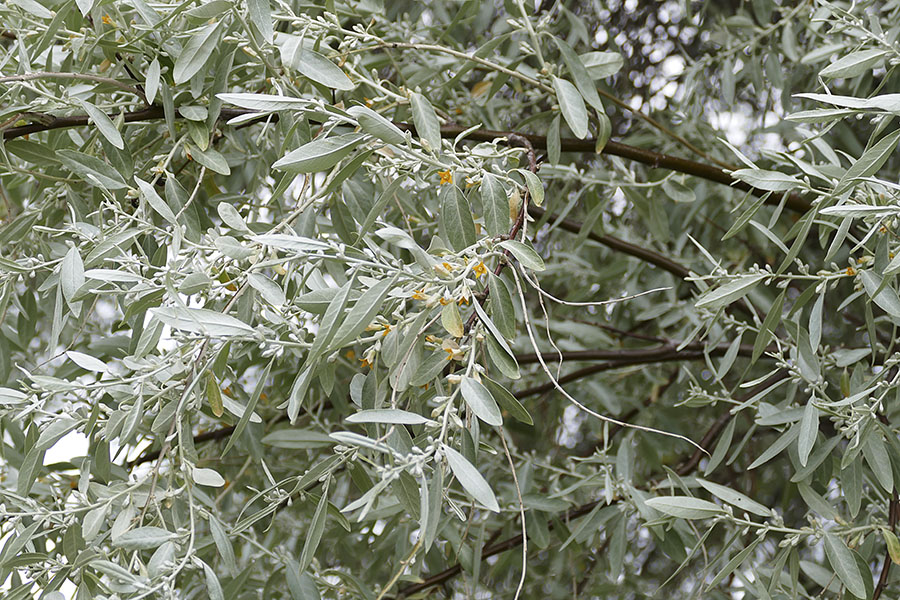
Silverberry
Also known as wolf willow, silverberry shrubs provide a thicket that is great for wildlife and preventing erosion. Silverberry prefers to be in full sun and in dry to medium soil types.
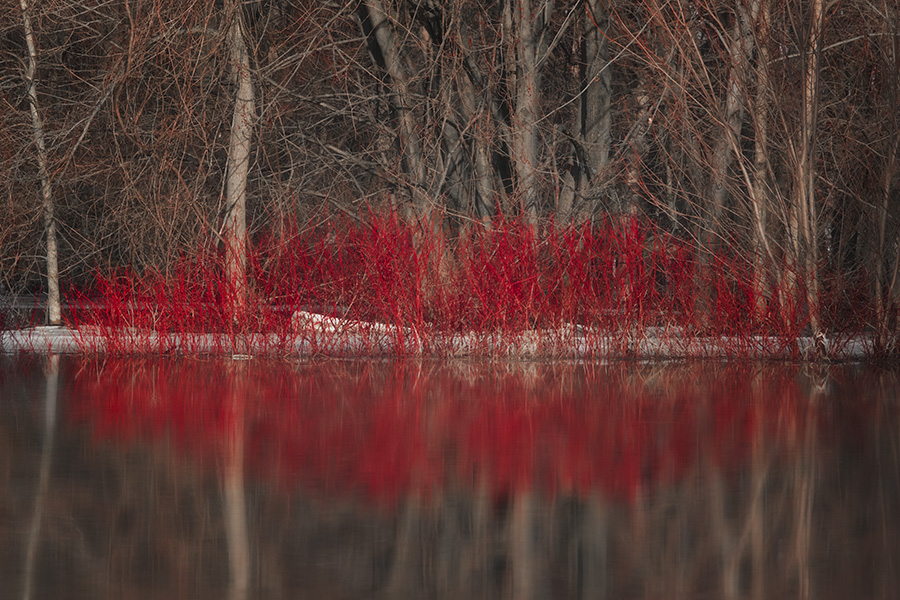
Red osier dogwood
This shrub has beautiful red bark that adds a brilliant burst of colour during the winter. In the summer, red osier dogwood produces delicate white flowers and berries that attract birds and butterflies. This shrub is an excellent choice near riverbanks and does well in medium to wet soils in areas with full sun to part shade.
Trees

White birch
White birch, also known as paper birch, have reddish brown branches that contrast with their mature creamy white trunk. Its bark separates into papery pink layers and its leaves bloom catkins from April to May. White birch trees produce two-winged nuts and do well in dry to moist soils. These trees make excellent accents in yards due to their dark green leaves during the summer and bright golden foliage in autumn.
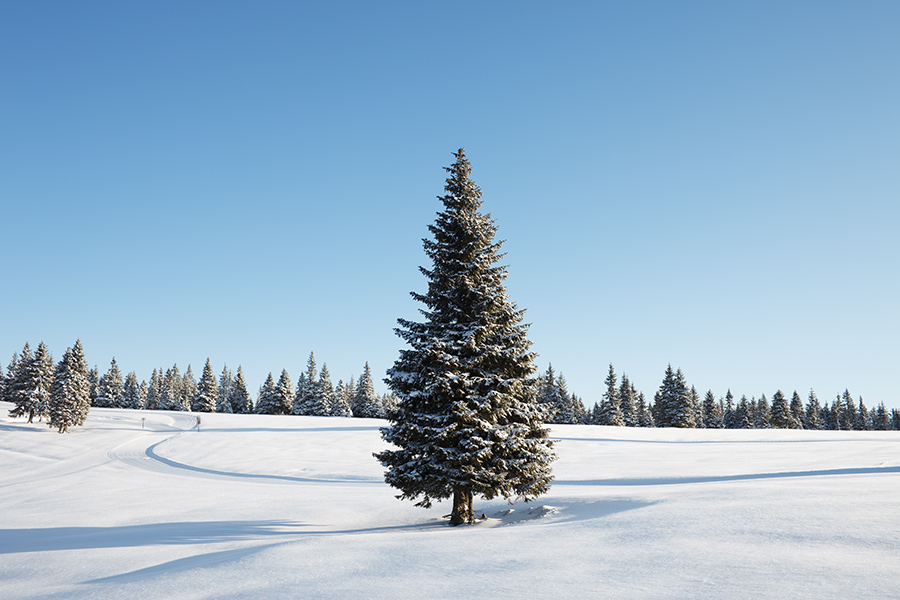
Black spruce
These trees are dense evergreens with brown to grey bark that look similar to scales. Black spruce trees have blunt needles, produce oval cones, and grow redish purple twigs. They do well in both dry and wet soil conditions. These trees provide excellent shelter for wildlife during the winter.
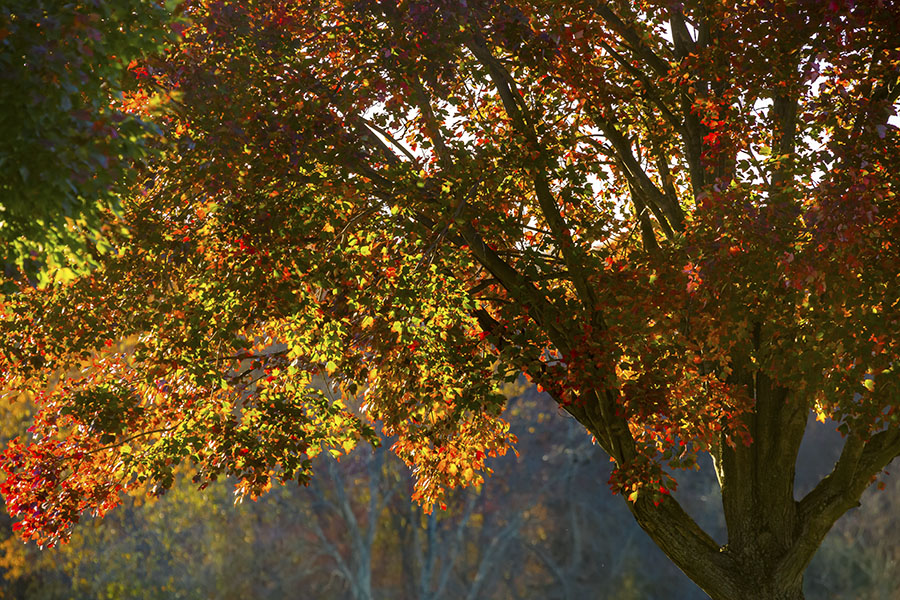
Manitoba maple
Manitoba maple trees are the largest maple on the prairies. Their leaves turn a yellowish green in autumn and their sap is used to make maple syrup. Manitoba maple trees are adaptable to many soil types and do well in full sun.
Surround these plants with mulch or rock overtop to add different textures. This way you can enjoy a beautifully landscaped yard with less maintenance than one completely filled with grass or non-native species that require more upkeep. You can find many native plant species though Prairie Originals or through your local garden centre.